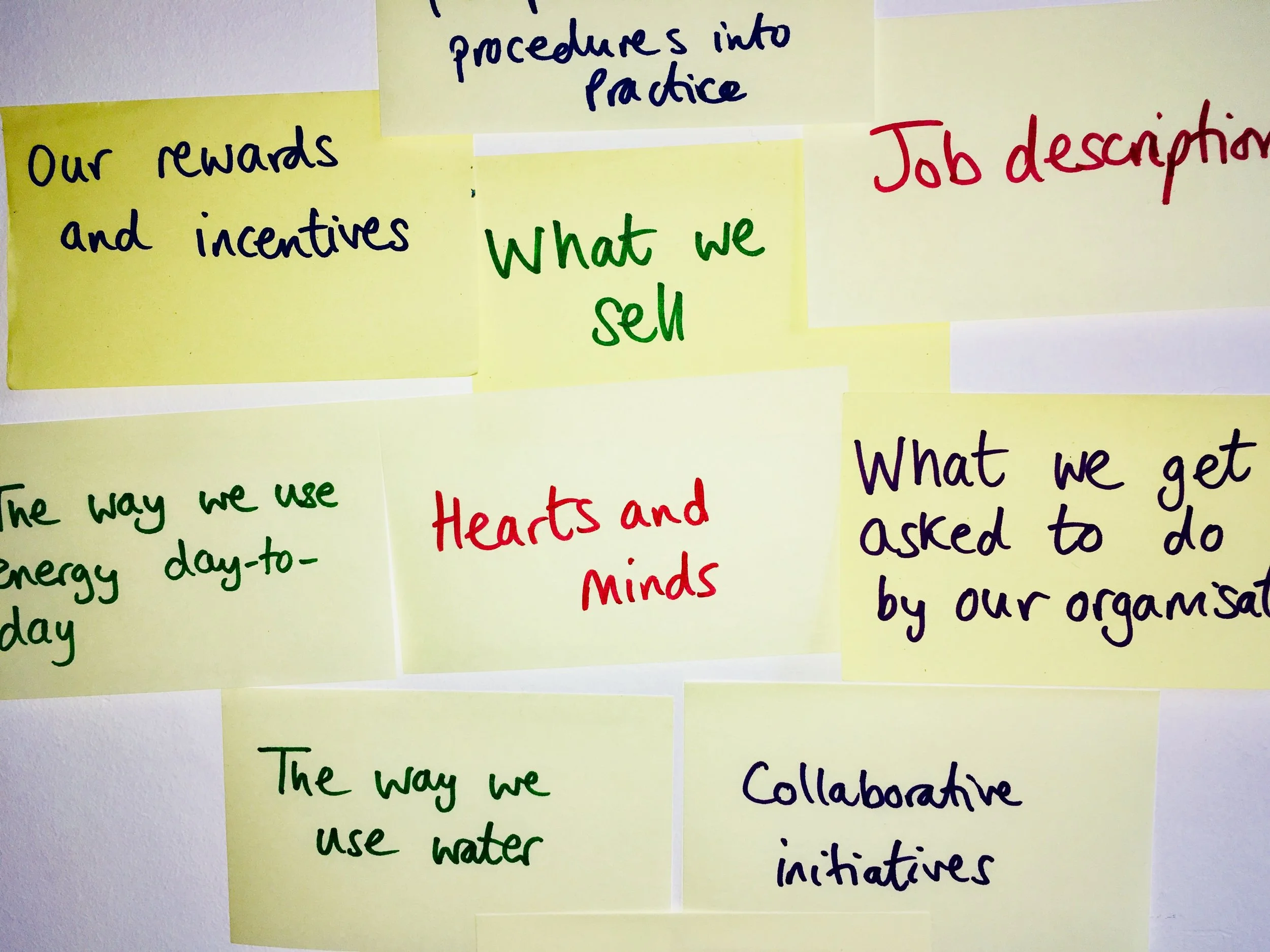What might change, when our organisation changes?
When you think about the changes you want to bring about, to make your organisation or sector more sustainable, what do you see changing? Do you have blind spots about where change might happen, and how deep or how obvious it will be?
It’s useful to think very widely about the kinds of things that might change – or need to change – to get us on track for sustainable development. Imagine a group of people in a room, brainstorming onto sticky notes, in answer to this question:
When our organisation is sustainable, what will have changed?
They write furiously, coming up with all sorts of ideas. When the stickies are all stuck up and have been loosely grouped, the answers look at bit like this.
Something like this…
Thinking about your own organisation and context, ask yourself
What else might change, that isn’t already mentioned in these stickies?
Do these other things fit easily in with the grouping of ideas already there?
Or do they sit together in a new cluster?
Three Levels of Culture
Look again at the examples of ‘what might change’. Some of them are about objective, physical things or behaviour that can be directly observed. Some are about rules and how things are organised. Some are about beliefs and values.
Edgar Schein is a respected organisational theorist. His well-known management model of the things that might change talks about three ‘levels of organisational culture’:
Artefacts – physical objects and observable behaviour that demonstrate important things about the organisation – logos, annual reports, advertisements, how the reception area is arranged and decorated, whether people use the recycling bins or not.
‘Espoused’ values – these are ‘consciously held views about truth and reality’, which explain and justify the organisation’s purpose and actions. They may be written in mission statements, and they may be vague. Beliefs, manifested as things like policies and talked-about norms (‘We don’t do that round here’) also fit here.
Basic underlying assumptions – the deep-rooted assumptions people make about the organisation’s purpose, how it relates to the outside world. These are often so ‘taken for granted’ that they are not examined or explored.
You can think of these three levels being like an iceberg - the top is visible, but the really significant stuff is under the surface.
So, if you want to really change things, it’s not enough to just go for the superficial, easy-to-observe ‘artefacts’, like putting more energy- and resource-efficient appliances on the approved procurement list. You need to find a way to make sure that the purchasing itself gets changed – through changed behaviour and changed values or assumptions.
Follow this up
Schein’s great book - and a surprisingly easy read full of stories, is ‘Organizational Culture and Leadership’.
This article is based on material in my book Change Management for Sustainable Development, Walker / IEMA 2017.
Making the Path by Walking
This post was first published in my Making the Path by Walking newsletter, April 2019. For practical tips on facilitation, organisational change and sustainability to your inbox each month, scroll down to the footer to subscribe.



